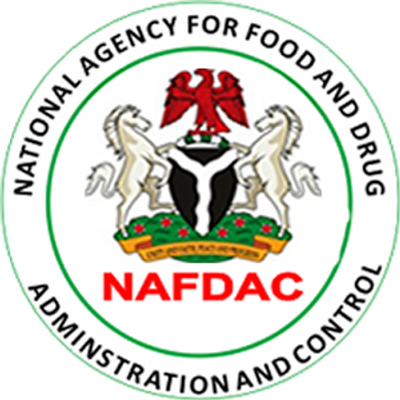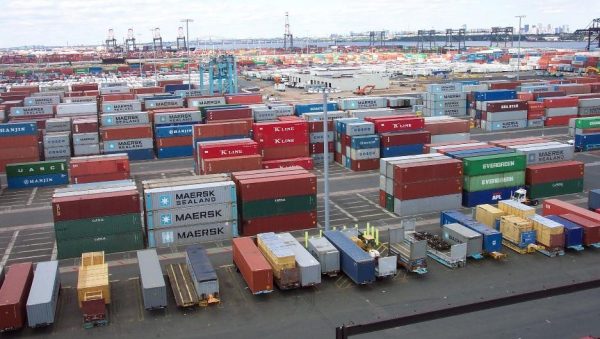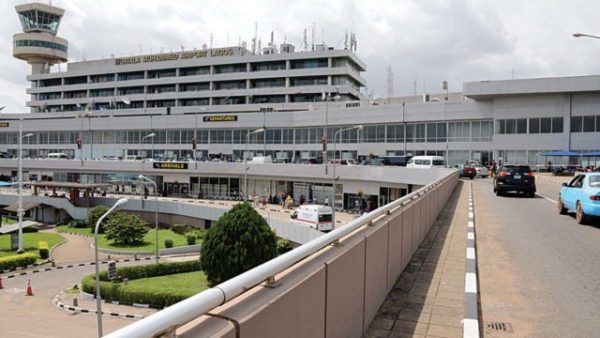STRATEGIES FOR SUSTAINABLE ROAD DEVELOPMENT IN NIGERIA
By Prof. Bamidele Badejo
INTRODUCTION
The overall importance and relevance of Transportation in the national economy of any nation be it developed or developing one is quite essential. Hence, efforts are constantly put in place by all stakeholders associated with transport and development to ensure that policies and measures capable of sustaining the sector are put in place. Without transport, it is very obvious that achieving the desires of man at least effort will be very difficult and probably unrealisable. Transport facilitate interaction between places and therefore add value to resources as it is observed that human needs cannot be found within one location. Since human resources are scattered globally, It is transport that has made it possible for their assemblage hence improving quality of life.
Transport involve the use or application of various modes such as Air, Waterways, Road, Rail etc. the commonest of the modes of transport being the road mode, this is because it provides door to door services. It is also important to stress that there exist huge problems challenges and dilemma associated with transportation especially the road mode. Some of the major problems associated with road transportation in a developing economy like Nigeria include Institutional related ones and Overlapping responsibilities among agencies established to ensure sustainable road transport development. The road transport system is further uncoordinated as well as competitive. It is on this note that there is need to further examine options or strategies available for sustainable road development in Nigeria.
NIGERIA
Is the most populated country in Africa with an estimate of over 190million people. It is predominantly a rural environment where urbanization is also growing at an alarming rate. The economy is essentially import / export focus. The country export crude oil and recently agriculture as an export product is growing. Suffice to say that Nigeria import virtually anything importable until recently that the government introduced stringent measures to address our import quagmire. Again industrial activities in the country are gradually growing in midst of infrastructure challenges especially energy and transportation. The background provided is to justify the growing demand for the development of transportation especially road transport.
TRANSPORT SITUATION IN NIGERIA
Generally the transport situation in Nigeria especially road can be discussed as highlighted hereafter:
i) Demand for road transportation is greater than supply.
ii) As observed earlier, there are institutional and legislative framework problems especially problems of political and legislative dimension.
iii) Poor and lobsided information and database. Hence creating problems of inexactitudes.
iv) Poor infrastructures and equipment base for use and painfully weak maintenance culture.
v) Their exist in addition stiff competition among all the modes of transportation, which is as a result of overall absence of coordination, integration and complementarities.
vi) Furthermore, dearth of human capacity and professionals that could demonstrate high level of competence, knowledge and understanding of the overall transportation system especially as it applies to the needs of the people is predominant.
vii) There is gross access to funds and finances. Probably this has been responsible for the general inability to respond promptly to economic and market size dynamics.
viii) The road transport is predominantly private sector driven.
ix) Finally, the general inability to cope with technological dynamics and changes.
IMPLICATIONS
There are implications associated with road transport challenges observed in the preceding sections which include:
i) Inefficiency and lopsidedness
ii) Uncoordinated and unintegrated
iii) Unsafe
iv) Inadequate and unattractive
v) Insufficient (Not available and scarce)
vi) Very competitive and by implication counter productive
vii) Furthermore, road transport is not affordable hence expensive and costly.
Finally, road transport remained unplanned as a result of “too many cooks”.
ECONOMIC COSTS IMPLICATIONS
Given the general implication the economic costs include:
i) Social economic, environmental, political and engineering consequences.
ii) Health implications especially urban/city roads e.g stress, fatigue, exhaustion as a result of traffic congestion.
iii) Pollution and blightedness
iv) Crashes (both vehicles and motorcycle)
v) More importantly entropy (confusion) on our roads.
EFFORT AT REVERSING OBSERVED PROBLEMS
Efforts have been put in place by government and other stakeholders associated with road transportation in an attempt to abate the socio-economic cost derived through the current road transport situation.
i) Multi modality approach whereby all other modes of transportation are expected to complement and synchronize with one another. The essence being to reduce dependence on the road transport.
ii) Road network expansion, Dualisation and reconstruction
iii) Traffic management measures especially urban traffics and the use of agencies to ensure compliance.
iv) Enforcement capacity through the uniformed and paramilitary agencies of government to put sanity on our roads.
v) Engineering / ICT deployment mechanism to ensure that technology use compliment human / physical effort.
vi) Institutional framework whereby synergies are created so as to achieve seamless road transport development.
Given the above it is unfortunate that the efforts implemented have not succeeded as a result of reasons such as;
i) The general believe is that road transport is an economic service / revenue generating oriented sector rather than social service oriented sector.
ii) Overall poor implementation of intermodal and integrated road transport development ideas.
iii) Poor data and information base required for effective road transport development are absent.
iv) The general reoccurring poor maintenance culture of road infrastructure cannot be ignored.
v) Undue politisation of the road transport sector.
vi) High level of smoke emission / pollution from vehicles even in the midst of climate change is unacceptable.
STRATEGIES FOR SUSTAINABLE ROAD DEVELOPMENT IN NIGERIA
It is indeed painful to note that huge resources and investment have been deployed to ensure that sustainable road development is achieved in Nigeria. And it is also noted that progress have been made in an attempt to ensure that the road transport system meet well with the needs and aspiration of Nigeria. It has only achieve pitiable progress. There is therefore an urgent need to re-examine how best to improve road transport development in the country. The strategy for sustainable road transport development could be addressed or better perceived through the consideration of the system theory or approach.
System Theory / Approach: System theory is the inter disciplinary study of systems. A system is a cohesive conglomeration of interrelated and interdependent parts that is either natural or manmade. It is an interdisciplinary theory about the nature of complex systems in nature, society and science and is a framework by which one can investigate and or describe any group of objects that work together to produce some results. The system theory can be classified into (3) three:
i Open System
ii Closed System
iii Isolated System
Furthermore, changing one part of the system usually affect other parts and by implication the whole system providing predictable patterns of behaviour. In other words and by implication road transport can be seen or observe through the system theory. Hence the systemic relationship associated with the road transport once it is omitted or disregarded the overall road transport system will collapse to cause problems.
i) Open System: Open System within the transport family is seen as a group of interacting or interrelated entities that form a unified whole. The interrelated entities are:
a) Air transport
b) Road transport
c) Rail transport
d) Water transport
e) Pipeline transport
f) Others ____________ Ropeway
The open system when examined from the point of view of transportation reveals the relationship and interrelationship that is expected amongst these modes. Meaning that each of this modes of transportation as a system have there competencies such as Strengthen, Weakness, Opportunities and Threats (SWOT) analysis.
ii) Closed System: The closed system is a solution whereby activities within the road mode are again synchronized in a system manner. These are:
a) The Vehicle
b) Motive Power
c) Way or Route
d) The Terminal
e) Planning and Administration (which include regulations, institutional and legal framework, standardization and human capacity resource development.
These five (5) crucial sub components are essential and critical to the overall understanding as a strategy for effective road development. The component parts are:
i) The Vehicle: within the context of road transport, the vehicle represent motor automobile, motorcycle, bicycle etc (vehicular chases). The vehicle vary from capacity to capacity and therefore must be taken into consideration when providing road infrastructure.
ii) Motive Power: This is the engine that keeps the vehicle in motion. The motive power which is the engine rely on various energy sources especially PMS and AGO. The source of energy is essential in ensuring friendly environment and technology dynamics that is increasingly eliminating the use of fuel and is been replaced through electricity and solar power.
iii) The Way: the way is the road or various networks which have been designed for vehicular movement or facilitate the use of vehicle for interaction and economic purposes. Essentially the route/way are provided to accommodate expected vehicles that are to use the facilities. In Nigeria, the route / way exhibit different ownership and this again is a major conflict area in sustainable road transportation.
iv) Terminal: Terminal can be described as various points where the mode of transportation essentially changes from air, water, pipeline to Land transportation or vice versa. However, terminal in road transport is expected to provide transit services for vehicles, goods and passenger, the terminal in the case of road mode vary from bus-stops, lay bys, hard shoulders, refuge and major pedestrian walkways, traffic separation measures etc. they all combine together to form terminal and stops for vehicle, goods and passengers.
v) Planning / Administration: Planning and administration is the human capacity component in the road transport functionality. It is to create synergy / coordination and efficient integration among all these component parts. Planning / Administration is human driven to a very large extent it constitute the major pillar upon which all the other component parts are anchored for the delivery of an effective, functional, efficient and reliable road transport system. It is essentially the brain box providing the much needed pivotal ingredient for the road system to evolve.
iii) Isolated System: in physical science, an Isolated system is either of the following whereby a physical system so far removed from other system that it does not interact with them. This is an isolatory and stand alone situation. It is a Thermo dynamic system enclosed by rigid immovable walls through which neither mass nor energy can pass. In other words, the system may be so distant from another system that it cannot interact with them. A system that does not interact with its surroundings, that its total energy and mass are constant in the case of road transport, under an isolated system situation, it does not relate with the environment and the activities are so counterproductive and isolatory.
iv) Other related strategies for sustainable road development include the
v SWOT Analysis
v Safe System Approach and
v 3 E’s
Way Forward
Promotion of intermodalism.
v Human resources and capacity development response.
v Decongestion of Urban Traffics through multi-modality.
v Improved information and data base – to guide decision making process.
v Development of transport technology capacity.
v Improving the transport institutions framework and relations (complementing one another rather than competition and muscle flexing).
v Improving the main road corridors – improved infrastructure and superstructure development base.
v Public enlightenment and education.
v Intensive advocacy on the Governments at all levels and other institutional stakeholders for functional legal reform system in place for Transportation.
CONCLUSION
It is quite obvious that there exist huge economic benefits and positive impacts associated with the transport sector in national economic development. The road transport sector when properly and adequately propelled is capable of sustaining the economic prospects of the country. Hence, the problems of unemployment, under employment, incidence of climate change and global warming and food security can be addressed effectively by developing an efficient transport system for the national economy to strive through effective transport sector development a further boost of Internally Generated Revenue (IGR) at the States and National levels are guaranteed. Finally, transport has in no small measure contributed positively to the national economy. This is not to say that there are no negative outcome associated with the benefits suffice to say that such can be mitigated.











